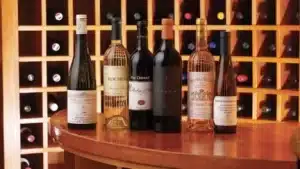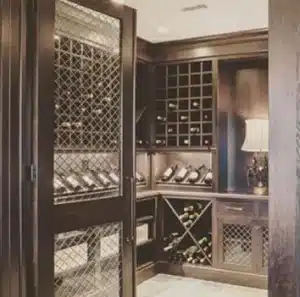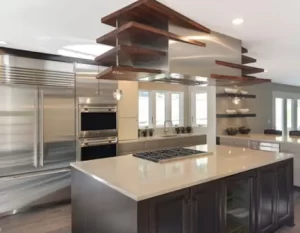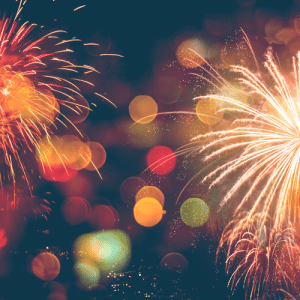Does storage and serving temperatures really make a difference? Absolutely!
Here are some helpful tips and hacks for Storing and Serving Wine and Champagne

- For wine collectors/collections, consider a wine closet or wine cellar (basement) where temperatures, humidity and light can be controlled. For shorter periods, easy access racks in kitchen cabinets, islands, refrigerator coolers, etc. can work well and more than meet your needs.
- Store wines away from light, particularly direct sunlight and fluorescent fixtures. UV rays can cause wine to become “light struck”, which will cause the wine to give off an unpleasant smell.
- Darker bottles offer better protection. Some bottles have UV filters built into the glass; however, they can still be subjected to light struck if enough UV rays penetrate the wine.
- Corked wine bottles should be kept horizontally. Bottles left in an upright position for a long periods will cause the cork to dry out, thus air will eventually seep into the wine and spoil it.
- Store bottles label side up; this will make it easier to spot any sediment that may have formed in the wine over time.
- Aim to keep temperature in the wine storage area as constant as possible, as heat is the enemy. Changes should occur slowly. The greater the temperature changes the more the wine will suffer
- Red wines are more susceptible to suffer from temperature-related problems than white wines.
- Bottles stored for extended aging of wine (over 1 year), refrigeration is necessary as even a below-ground wine cellar may not be cool enough.
- Wine storage temperature, for bottles stored longer than just brief periods should not go over 75˚F. Wine begins to oxidize at 75˚F.
- The optimum temperature for storing a varied wine collection is 54°F. Lower than 54°F won’t harm the wine, only slow down the aging process.
- More expensive dual-zone wine refrigerators can store two types of wine at two different temperatures. Set one compartment temperature between 50 and 65˚F for red wine and set the other between 45 and 50˚F for white wine. Store red wines for up to ten years and white wines for up to three years.
- It is said to keep the humidity at approximately 70%; this keeps the cork from drying and will minimize evaporation. However, anywhere between 50 to 80 percent humidity is genrally considered safe.
- Try not to move bottles of wine until you are ready to use them.
- Wine “breathes”, so don’t store bottles with anything that has a strong smell, because the smell will permeate through the cork and taint the wine.
- Not all wines improve over time; inexpensive wines won’t improve.
- Red wines can be stored and aged anywhere between 2-10 years (to mature). Most white wines should be consumed after 2-3 years of storage. Some select White Burgundies/Chardonnays can be aged for over 20 years.
- Different wines taste best at different temperatures, which may vary from the temperature in which they were stored. Right before drinking the wine, adjust the to the appropriate serving temperature:
- Blush, rose’ and dry white wines serve cold: 46-57ºF
- Sparkling wines and champagne serve ice cold: 43-47ºF
- Light red wine serve cold: 55ºF
- Deep red wines serve cool: 59-66ºF
“I cook with wine; sometimes I even add it to the food.” ― W.C. Fields
Need expert advice and the best selections for making your home ideal? Contact Bella Casa Kitchen & Bath and visit of our newly expanded and exclusive custom design showroom! You’ll find everything you need to make your home beautiful, inviting and comfortable from quality kitchen and bathroom cabinets and wine storage, to beautiful flooring, sinks and countertops to hardware, expert assistance and much more.
Bella Casa Design & Remodeling Showroom
Kitchens, Baths, Flooring, & Basements
1812 W. Tilghman St, Allentown, PA
610.433.9800
Serving the Lehigh Valley and Surrounding Areas







